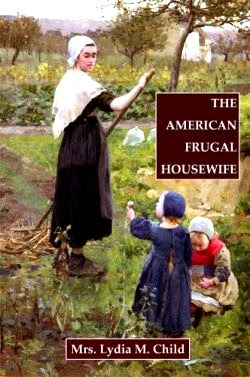 When you go
to the market these days, after deciding you’re going to quit using so many
mixes and use more ‘scratch’ recipes; you stop first at the flour section. It’s full of all kinds of flours – even the
simplest store will have an assortment of different kinds. If you go to one of the Amish stores or look
at a catalog or website like King Arthur Flour, you’ll find even more, along
with dough enhancers, grains, etc.
When you go
to the market these days, after deciding you’re going to quit using so many
mixes and use more ‘scratch’ recipes; you stop first at the flour section. It’s full of all kinds of flours – even the
simplest store will have an assortment of different kinds. If you go to one of the Amish stores or look
at a catalog or website like King Arthur Flour, you’ll find even more, along
with dough enhancers, grains, etc.
Since we’ll
all be baking more as the holidays approach, let’s look at the different kinds
of flours available.
Bleached flour is flour that is treated
for a longer shelf life and to strengthen the protein. Unbleached flour is aged naturally and many
cooks think it has a better flavor. I
usually buy unbleached flour.
All-Purpose Flour and Self-Rising Flour–
this is a combination of hard and soft flours, used most often for pie crust,
biscuits, muffins, quick breads and the like.
It’s also used in most French bread recipes and sweet yeast dough
recipes. This is the flour most cooks use regularly. Northern or national
brands like Gold Medal, Pillsbury or Robin Hood are more hard wheat for bread
bakers. If you want softer, “biscuit”
flour, a Southern brand, like White Lily or Martha White, is perfect. Most self-rising flour is also softer,
biscuit flour. Interestingly, the only place I can get Martha White self-rising flour around here is at one of the dollar stores.
 Bread Flour – this flour is mostly hard
wheat, sometimes called “high-protein” flour, and makes light, firm stretchy
yeast bread dough. It’s also good for
homemade noodles and pasta. I use bread
flour for most sandwich breads; especially if I also use other flours or
grains, like whole wheat or oatmeal. It
helps multi-grain breads from being as heavy as bricks. French-type breads usually call for all-purpose
flour, and I don’t usually use bread flour in white dinner rolls or sweet bread
dough either, as I want a tenderer crumb.
It isn’t any more necessary to the occasional bread baker than cake
flour is to the casual cake baker.
Bread Flour – this flour is mostly hard
wheat, sometimes called “high-protein” flour, and makes light, firm stretchy
yeast bread dough. It’s also good for
homemade noodles and pasta. I use bread
flour for most sandwich breads; especially if I also use other flours or
grains, like whole wheat or oatmeal. It
helps multi-grain breads from being as heavy as bricks. French-type breads usually call for all-purpose
flour, and I don’t usually use bread flour in white dinner rolls or sweet bread
dough either, as I want a tenderer crumb.
It isn’t any more necessary to the occasional bread baker than cake
flour is to the casual cake baker.
Cake flour – our mothers bought Swansdown
or SoftaSilk, which I can still buy today. It’s made from soft wheat flour, with low
protein, and makes very tender cookies, cakes, biscuits – Myrna and I both keep
some on hand, in the freezer because we
don’t use it regularly, but most cooks and current cook books use all-purpose
flour instead.
Pastry flour is used for things like
puff pastry, Danish, croissants and piecrust.
It’s not commonly found in local grocery stores.
Whole wheat and Graham flour are both
whole wheat – the Graham flour is usually more coarsely ground. I use them interchangeably for whole wheat
bread; since whole wheat is our family favorite, I keep some always on hand.
Rye and Pumpernickel flour are higher
in bran, minerals and fiber than wheat. Medium
rye is most common in the US. Pumpernickel rye, often called rye meal, is
just that: a coarse meal rather than a flour; it is made by milling the entire
rye berry.
Storage -I keep my whole wheat, rye and
cake flour in the refrigerator or freezer; keep your regular all-purpose and
bread flour in a cool place, preferably under 75°. Whole wheat flour, which has more of the oily
wheat germ, turns rancid if keep for long periods, and I don’t use my cake
flour as fast, so I keep it cool.
Brands - I try to buy my flour where it
turns over quickly, so I don’t get it with bugs already in it. That’s more important to me than brand. Sad to say, that isn’t at our local
groceries. I’ve been happy with flour
I’ve purchased at both Sam’s and Costco, as well as at the local Amish stores. The amount you buy should depend on the
amount of regular baking you do. I
recommend starting small, and I usually reduce the amount I keep on hand in hot
weather, which seems to encourage bugs.
Even I don’t like to buy more than 25# at a time, but I also don’t want
to run out!!

















What a good reminder post... I have five pounds I've had in storage for a few months, and I'm actually going to throw it out and not use it... I think it will be buggy when I open it!
ReplyDeleteIf your flour is white flour, I would sift a little of it first and see if it isn't okay. White flour keeps much longer than whole grain flours.
ReplyDeleteA very informative post!! I also keep Cake Flour on hand for - well cakes of course - and for gravies and sauces requiring flour as a thickener. I make virtually everything from scratch. Other than cake flour, I grind all of my own flour from hard red wheat (for breads, rolls) and soft white wheat (cookies, brownies, etc.). Since fine flour dust is inevitable with my grinder (a vintage Excalibur) I minimize clean up by grinding a lot at one time and store it in the freezer in quart or half gallon canning jars.
ReplyDeleteWhat was funny was I always bought white flours and wheat flour. Occasionally if on sale another type of flour but during the pandemic it was amazing to me that there was no flour of any kind left on the shelf. Nothing!!
ReplyDeleteAmen! Who would have thought that flour and yeast would ever be in short supply!?!
DeleteI keep a pretty good supply and I haven't been sorry. I buy 10 pounds at a time and keep the bags rotated...that way I have a year's supply on hand but it isn't all old. I keep the bags in well-sealed 5 gallon buckets in a cooler place.